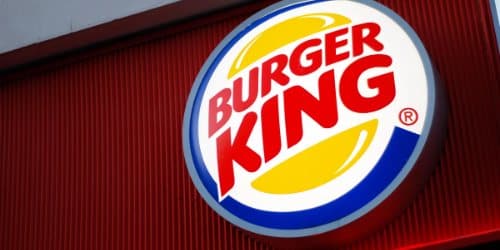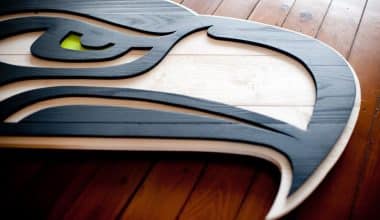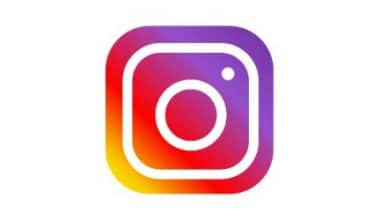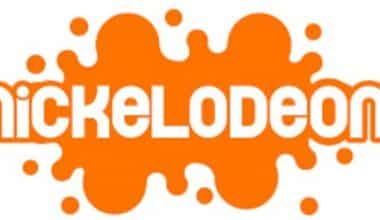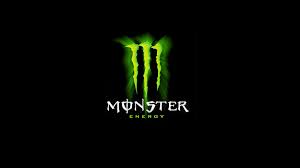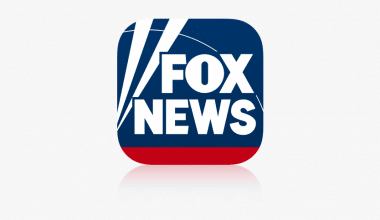In the United States, Burger King is a fast-food restaurant brand that dates back to 1953. The chain is well-known for its hamburgers and French fries and is now one of the world’s most popular fast-food companies. Restaurant Brands International owns the business, which is based in Florida and employs close to 35,000 people.
You know what they say; behind every successful corporation lies a great history. Let’s find out the “great’ story behind the famous Burger King and the evolution of its old and new logo.
Overview of Burger King
Before the first rebranding in more than 20 years happened in 2021, the popular Burger King logo went through many changes. Along with changing its logo, the company also changed the look of its staff uniform and product packaging. These are the results of Burger King’s rebranding over the years. It’s nearly impossible to not have heard of Burger King (BK), the second-largest burger chain with a global network of more than 17,800 locations in more than 100 countries, whether you enjoy burgers or not. This hamburger chain, which used to be called InstaBurger King, is based in a part of Miami-Dade County, Florida, that is not a city. Unfortunately, Insta-Burger King came into financial difficulties in 1954, and its two Miami-based franchisees, David Edgerton and James McLamore, took it over and changed the name to “Burger King.”
In the ensuing fifty years, the ownership of the brand changed hands four times, with the third group of owners, a joint venture between Bain Capital, TPG Capital, and Goldman Sachs Capital Partners, going public with their business in 2002. According to a US$3.26 billion contract, 3G Capital (Brazil) acquired a significant stake in the business in the latter half of 2010. The corporation started a restructuring effort to improve growth and marketing. In partnership with Berkshire Hathaway, 3G merged Burger King and Tim Hortons, a Canadian doughnut shop, to form Restaurant Brands International.
As interesting and fascinating as Burger King’s ownership history is, so is the logo’s journey. Here is how one of the biggest fast-food restaurants in the world modified its visual identity to keep up with the changes. People saw another Burger King rebranding as Jones Knowles Ritchie changed the company’s logo. It was a mix of the 1969 and 1994 logos. It had a strong red wordmark in the middle of two halves of a bun. The logo has a cozy, welcoming appearance thanks to its light cream background. The color blue was entirely eliminated from the emblem’s color scheme.
Old Burger King Logo
The old logo featured a monarch perched atop a hamburger while clutching a Coke. The words “Home of the Whopper” were written at the bottom of the logo, which was colored in shades of red, yellow, blue, and brown. The Burger King logo was modified in 1969. Burger King had begun franchising when the Pilsbury company bought it. The Burger King old logo was first used in 1953 but was only in use for a short time before being replaced in 1954. Up until 1957, when the last “experimental” concept with a cartoonish monarch sitting on a burger was produced, the second emblem, based on custom black text, was used by the chain. This badge was still in use ten years later.
New Burger King Logo
The name Burger King was enclosed in two buns in the new logo. Their Hungry Jack’s locations in Australia featured a similar logo. The hamburger from the old logo was maintained, but it was made simpler. The text was made orange-red, and the buns were dark yellow. As was customary in the 1960s and 1970s, the font was curved, thick, and angled. This helped sustain the Burger King brand by keeping color harmony between the logos.
This Burger King’s new logo’s color palette and general design satiated customers’ cravings. To make it clear and simple to recall, the logo was streamlined. This logo and the present one are comparable. For many years, the logo was unchanged. A new Burger King logo was created in 1999; it is still in use as at the time of this writing. Burger King has changed its logo to one that is more modern and simple. This is to show that it is a business that thinks ahead, has a young attitude, and can grow and change. The company kept its well-known idea and rethought it, improving the design and giving the logo a stylish, strong look.
Burger King Logo History
In the United States, Burger King is a fast-food restaurant brand that dates as far back as 1953. The chain is famous for its hamburgers and French fries, and it is now one of the world’s best-known fast-food companies. The company is run by Restaurant Brands International. It is based in Florida and has about 35,000 employees. Burger King’s logo is an example of a forward-thinking company that values tradition and history. The firm’s logo, which is instantly recognizable all over the world, is a wonderful depiction of what the company stands for and what it wishes to accomplish.
In reaction to the McDonald brothers’ business success, Kramer’s wife decided to open their own equivalent restaurant in July 1953. The first restaurant, which opened in Jacksonville, Florida, was called Insta-Burger King. The Insta-Broiler, a revolutionary piece of equipment created just for this first restaurant, proved to be quite effective. It was so good at quickly making outstanding burgers that its use became a requirement for future franchise owners as the network grew.
The Expansion
Just two years after the first Insta-Burger King restaurant opened, the brand had forty distinct sites all throughout Florida. Even though they were doing well at first, Mr. Kramer and Mr. Burns soon ran into money problems and had to sell the company to James McLamore and David R. Edgerton, two Cornell graduates. The chain’s international rights were bought by Mr. McLamore and Mr. Edgerton in 1959, and they gave the business the new moniker, Burger King of Miami. When the new owners started giving territorial licenses to independent franchises all over the country, they quickly changed the name of the business to Burger King Corporation.
The company’s ground-breaking flame broiler is what initially made them famous, but early in its evolution, Burger King added two more innovations that helped it become the global success that it is today. The first of these was the Burger King mascot, which the firm launched in 1955 and went on to make a regular appearance in all of its advertising for the following 60 years. The Whopper, Burger King’s flagship burger, was the next innovation. McLamore came up with the Whopper and gave it its now-famous name to give people “images of something gigantic.”
He did this because he realized that making a very big burger was the best way to get more customers. The Burger King business was once more sold in 1967, this time to the Pillsbury Company.
Donald N Smith’s Involvement
At the time Burger King was acquired by the Pillsbury business, the chain had expanded to 274 locations across the nation and was thought to be worth $14 million. But the company soon had trouble keeping track of its franchisees, which caused the quality of its products to be all over the place. In an attempt to right the ship, Burger King hired McDonald’s CEO, Donald N. Smith, to oversee the renegotiation of all future franchising agreements.
Under Smith’s leadership, the franchise was managed in a much better way, and franchisees were expected to follow a strict set of rules that make sure all Burger King locations offer the same products and services. The Burger King brand was sold a third time in 1989, this time for a staggering $5.7 billion to the British booze giant Grand Metropolitan. But 13 years later, in 2002, Grand Metropolitan sold the business again to the Texas Pacific Group for $1.6 billion. This meant that Grand Metropolitan lost money on their investment. For a total of $2.2 billion, they sold the brand again to 3G Capital, which is currently its majority owner, after holding onto it for eight years. Finally, Burger King went public in 2012 and was assigned the ticker symbol BKW on the New York Stock Exchange.
Burger King Corporation Today
The Burger King Corporation is currently valued at $7.6 billion. There is no doubt about Burger King’s success, even if this figure falls short of McDonald’s, Burger King’s main competitor, which is currently worth slightly more than $158 billion. The famous Burger King logo has been very important to the company’s growth from a single restaurant in Jacksonville to an international chain worth billions of dollars. These roles have aided the brand in becoming a household name and brand all over the world.
The company’s founders, Keith J. Kramer and Matthew Burns, made the first logo for the company a year after the first restaurant opened. It included the restaurant’s name in a large, all-caps font beneath a half-circle sun. A year after James McLamore and David R. Edgerton bought the business, the logo was changed to a simple design that only included the name of the eatery in a unique sans-serif typeface. Burger King made a new logo announcement at the beginning of 2021. With a few small changes to the logo’s color and style, it looks more retro and simple. The new logo will begin to appear on advertising, packaging, and signage.
The company’s name is still displayed between two buns in the current Burger King design, but it has a more rounded form, brighter colors, and a blue line that encircles the majority of the logo. Since this most recent version of the Burger King logo came out 21 years ago, there have been no other changes.
Burger King Logo Evolution
1953 – 1954
The first logo for the business, which was known as Insta Burger King for its first year of operation, was created in 1953. The wordmark was large, in all caps, and featured a rising sun. A cheerful and welcoming logo that was only used by the company for one year.
1954 – 1957
After David Edgerton and James McLamore bought the restaurants, the name was changed to Burger King. The logo was altered to a simple, bold phrase in a unique sans-serif style with jagged little edges. For three years, the brand’s symbol was a simple logo that didn’t have any extra information.
1957 – 1969
In 1957, the logo’s typeface and color scheme were modified. Now the light ochre background with the red text looked vibrant and distinctive. The font was changed to one that was bolder and cleaner. It looked like the modern sans-serif TILT font, which has fun letters.
The delicate “Home of the Whopper” phrase, with the exception of the word “Whopper,” was used in the new design.
1969 – 1994
In 1969, the original version of the Bun logo came into existence. Between the ochre-colored bun’s two sides, the red, bold text was positioned on two levels. Although the design, composition, and shape of the new logo were entirely different from the old ones, the color scheme was carried through.
Now the text is presented in a bold, rounded sans-serif with elegant, clean lines. To improve the harmony between the layers, the “king” portion was made larger.
1994 – 1999
In 1994, the corporation made changes to the logo. The ochre of the buns has been changed to a brilliant orange, giving the logo a more vibrant and forceful feel. The typeface is now more conventional and substantial. The company’s main target audience is shown by the red and orange color scheme, which stands for energy and a young, carefree spirit. The wordmark is written in all capital letters in a bold, rounded sans-serif font that is similar to VAG Rounded ExtraBold but with the “G” and the tails of both “Rs” flattened to make the text look more confident and solid. This logo, which is still used by the chain in some countries, is known as the current one.
1999-2000
Burger King’s logo was updated in 1999 by the Sterling Brands advertising firm. With the buns now tinted yellow with some white strokes, the wordmark was now positioned diagonally in the space between the bun halves. The red text has been expanded and is now written in a fresh, contemporary sans-serif typeface with angular, sleek lines. In contrast to earlier iterations, the current logo is rounded. The logo is accented on the left with a blue C-shape line, which makes it appear brighter and more professional while boosting self-assurance and knowledge. The Burger King logo, which is one of the most recognizable designs in history, makes people feel happy and welcome. It is ideally balanced in terms of color and shape.
2021 – Today
Jones Knowles Ritchie will redesign Burger King’s logo and other visual elements in 2021. Bold red writing sandwiched by two orange buns makes up the new logo. The image’s light cream background also serves as a frame for the insignia, giving it a cozier and friendlier appearance. The brand has fully eliminated blue from its color scheme. People saw another Burger King rebranding as Jones Knowles Ritchie changed the company’s logo. It was a mix of the 1969 and 1994 logos. It had a strong red wordmark in the middle of two halves of a bun.
The logo has a cozy, welcoming appearance thanks to its light cream background. The color blue was entirely eliminated from the emblem’s color scheme. This logo is now used on most of the brand’s products and marketing materials, from menu cards and staff uniforms to TV ads and online ads. This version of the logo was added to the official Burger King website and mobile apps on January 7, 2021. Ritchie says that the new logo honors the company’s past with a style that shows simplicity, confidence, and good times.
Font and Color
The bold, round letters in the Burger King logo are set in uppercase in a strong sans-serif font that is similar to Corkboard JNL and Frankfurter Std Normal but has small changes in the shape of the letters. Red and orange make up the color scheme of the Burger King visual identity, with a light cream-beige background. This color scheme is bright and catches the eye. It makes the chain’s logo stand out from its competitors and gives off a sense of movement and energy.
The Identification Value of the Burger King Logo
In part, because its mascot and logo are easy to remember, Burger King has built a strong marketing campaign over the years. All of Burger King’s current marketing efforts, from TV commercials to social media marketing and more, use these elements of their brand. Of course, a restaurant’s emblem also plays a crucial role in drawing passing guests. By making their logo easy to recognize and displaying it on large billboards near their locations, Burger King can advertise to anyone driving by. Burger King has taken advantage of the fact that they can license their logo by making a wide range of Burger King clothing. They use it as a focal point in all of their marketing initiatives and as a way to draw customers while they are on the go.
Why Did Burger King Change Their Logo?
The owners of Burger King wanted the new logo to look just like the famous one from 1969, so in 2021, it was changed. As a result, the new Burger King logo serves as both a symbol of the start of a new era and a homage to the past. By employing the natural color of baked goods for the bun and the hue of a well-done cutlet for the text, the logo designers were able to make it appear more “appetizing.” In 2021, the new Burger King logo was unveiled. This is because the idea of naturalness is promoted and this fast food business uses only clean, fresh ingredients to produce its food.
Additionally, the historical connection was highlighted by the use of straightforward, illustrative previous insignia. In that year, every part of the franchise was updated, including the packaging, interior design, uniform, and logo. Burger King changed their logo to one that is simpler and more minimalistic to make it look more modern and forward-looking. This shows that the company is able to adapt to and keep up with all the latest design trends in a field that is always changing.
What Does the Logo of Burger King Mean?
The hamburger represented by the Burger King logo is mouthwatering. To do this, the designers made a half-styled bun and put it in the middle of the “patty,” which is the name of the brand. In this way, the logo of a fast food restaurant serves as both an advertisement for the business and a marketing tool for drawing customers. The Burger King’s global presence is represented by the blue circle. The blue circle demonstrates that Burger King restaurants are located all over the world. People are encouraged to enter and sample Burger King’s cuisine by the swoosh at the end of the circle.
It is a warm, tranquil emblem with a vibrant, lively interior. Customers are invited and excited by this logo, which is also incredibly memorable. When it comes to the psychology of color in advertising, the colors of the logo are ideal for Burger King. The Burger King logo is clear and easy to understand; it doesn’t have a secret message. It depicts a burger with a two-level wordmark in place of the meat layer. The fast food restaurant chain’s signature item, core offering, and part of its name is the burger.
Did Burger King Get a New Logo?
Before its last change in 2021, which was the first rebranding of the fast food company in more than 20 years, the iconic Burger King logo has experienced numerous changes. In addition to changing its logo, the company also changed its employees’ uniforms and the way it packages its products. These are the results of Burger King’s rebranding over the years.
Conclusion
Burger King needed a logo that looked modern and professional to show its authority and set it apart from competitors. As a result, the company has grown to become one of the best fast-food franchises in the world. Fortunately, the new logo for 2021 has been able to accomplish the goal. Like other large international companies, Burger King has a strong online presence, and its logo was made to work on a variety of digital platforms.
As part of its digital rebranding, Burger King uses a new favicon on its app and a few other online platforms. This favicon takes the letters B and K and turns them into a little burger. The goal is to make sure you can quickly identify and distinguish each part of the logo from others, whether you’re looking at just one, like the font or color, or all of them at once.
